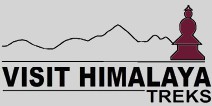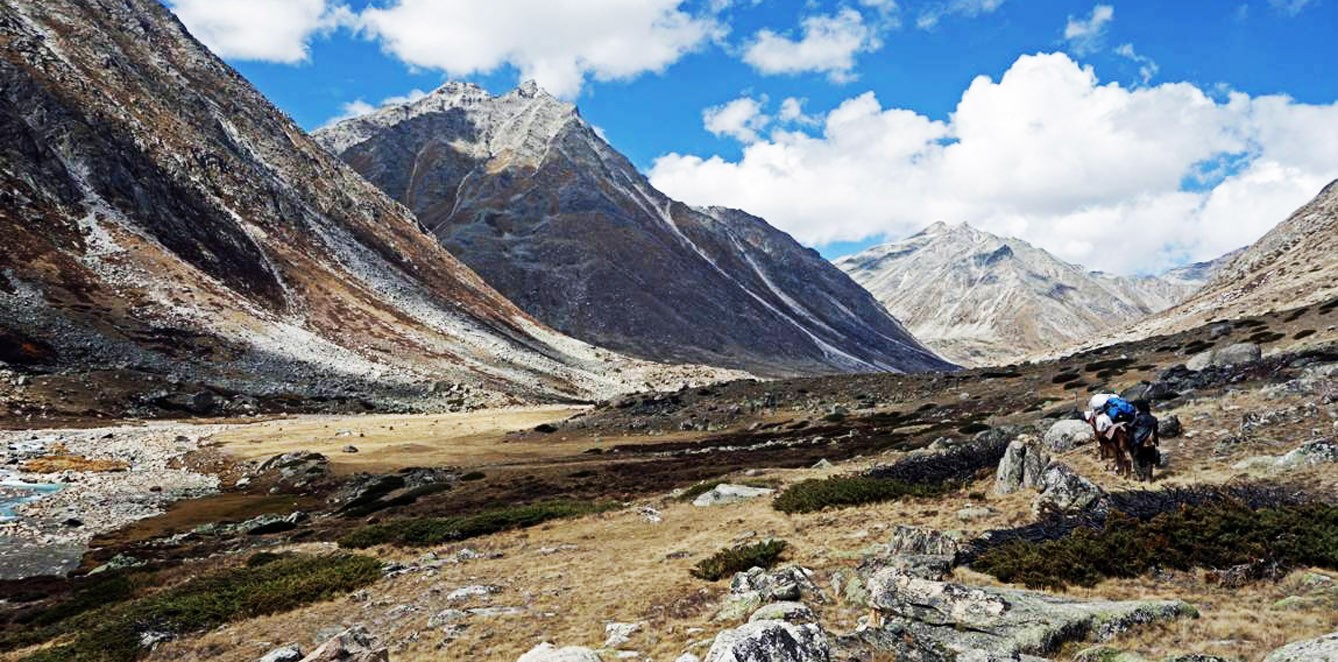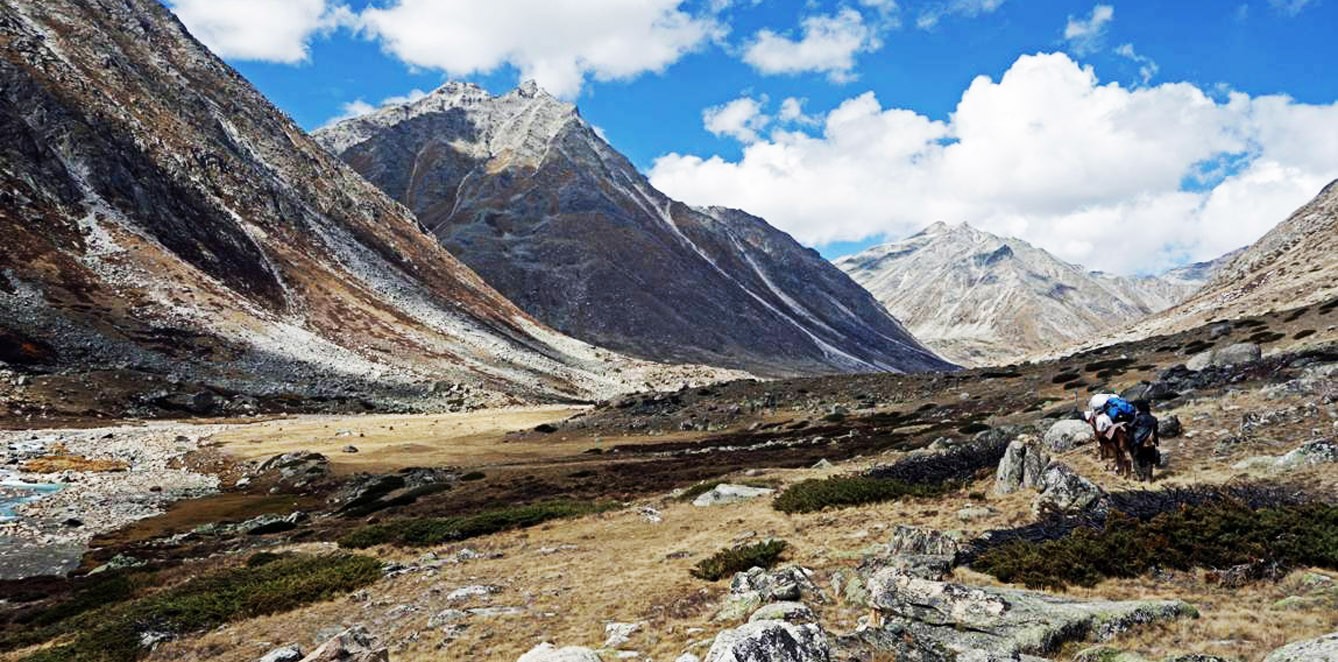Rara Lake Humla Yari Valley Trek - In the 21st century, it’s hard to find areas where you feel totally cut off from the modern world and can be at peace in nature, carried only by your own strength. This is possible on the Rara Lake Humla Yari Valley trek, which crosses through far-western Nepal. Highlights are untouched natural areas, gorgeous rivers and streams spanned by suspension bridges, the pristine waters of Rara Lake, isolated communities where people will be genuinely surprised to see you, and a feeling of stepping outside of the world as you know it.
Highlights of the Rara Lake Humla Yari Valley Trek.
- Trek through a part of Nepal that very few outsiders ever see.
- Complete the Great Himalaya Trail here, should you be up for an incredible adventure.
- Pass through river valleys, farmland, remote villages, and protected natural areas.
- Stop at the gorgeous RaraLak, the largest and deepest lake in Nepal and famous for its bird life.
For trekkers completing the entire Great Himalaya Trail (a network of trails throughout Nepal that connect the whole of the Nepali Himalaya), the Rara Lake Humla Yari Valley trek is the final section. But you don’t need to be doing the whole thing to join this trek, as it can be done as a standalone route.
Rara Lake Humla Yari Valley Trek Route.
As this is a very infrequently visited trekking region, changes may need to be made to the itinerary depending on weather, environment, or group conditions. Trekkers on this route should remain flexible and open-minded about changes. But, the following general route will be followed. Reach Nepalgunj, on the Western Terai, via a flight from Kathmandu, then take another flight to the mountain airstrip at Jumla (3010m). Because of the rapid jump in altitude, you’ll need to take it easy for a while, to prevent potential altitude-related problems.
Spend the first couple of days walking in the direction of Rara Lake, the biggest and deepest lake in the Nepali Himalayas. The Rara National Park is a beautiful protected area, and the lake is famous for its abundant bird life. Leaving Rara Lake, head west towards the Karnali River, a gorgeous blue river that flows from Tibet. The river is at risk from a hydropower project that will see it dammed, so come now and enjoy this beautiful river while you can.
Continue to climb steadily, as well as make some descents, along ridges and streams, through forests and villages, and switchbacks and contouring trails that keep the walk interesting. Reach Simikot, the administrative headquarters of Humla district. The small town is only reachable from other places in Nepal by air (or on foot!) but it is connected by road to Tibet.
Take a detour to Yari, a small town that is very near the border with Tibet. The walk to and from Yari is beautiful, passing through orchards, fields of crops (such as barley, millet, and wheat), and a steep ravine. Only the Sarpa La separates Yari from Tibet. Return to Simikot, and make your way back to Kathmandu by air.
Accommodation
Western Nepal is extremely remote and underdeveloped, so camping is the only accommodation option. Further, all food supplies should be carried with you.
Rara Lake Humla Yari Valley Trek Itinerary
Day 01: Arrive in Kathmandu.
Day 02: Sightseeing and Trek Preparation.
Day 03: Fly to Nepalgunj. (130 meters).
Day 04: Fly to Jumla (2370m)
Day 05: Trek to DanpheLagna Camp (3500 meters)
Day 06: Trek to Chautha (2770 meters)
Day 07: Trek to Jhyari (2400 meters)
Day 08: Trek to Rara Lake (2980 meters)
Day 09: Rest Day at Rara Lake
Day 10: Trek to Gamghadi (2095 meters)
Day 11: Trek to Bam (2700 meters)
Day 12: Trek to Jogimara (3005 m) viaChangkheliLagna (3594 meters)
Day 13: Trek to Darma Bazar (2200 meters)
Day 14: Trek to ApsiaLek (3195 meters)
Day 15: Trek to PunkhaKhola (3010 meters)
Day 16: Trek to River Camp (2100 meters)
Day 17: Trek to Simikot (2950 meters)
Day 18: Trek to Dharapuri (2300 meters)
Day 19: Trek to Kermi (2670 meters)
Day 20: Trek to Yalbang (3020 meters)
Day 21: Trek to Tumkot (3380 meters)
Day 22: Trek to Yari (3700 meters)
Day 23: Cross Nara La (4620 meters) and trek to Hilsa (3720 meters
Day 24: Trek to Manepeme (3990 meters
Day 25: Trek to Til (4000 meters)
Day 26: Trek to Halji (3660 meters
Day 27: Trek to Jang (3930 meters)
Day 28: Trek to Talung (4370 meters)
Day 29: Cross Nyalu La (4949 meters) and trek to Shinjungma (3620 meters)
Day 30: Trek to Talung Kermi (2670 meters)
Day 31: Trek to Talung Simikot (2950 meters)
Day 32: Fly to Nepalgunj and continue to Kathmandu.
Day 33: Free day at Kathmandu.
Day 34: Departure.



